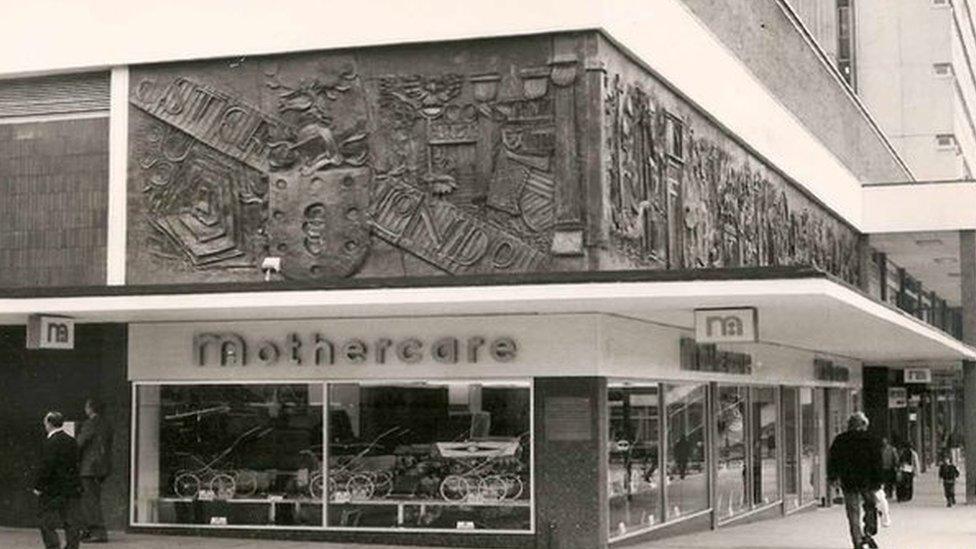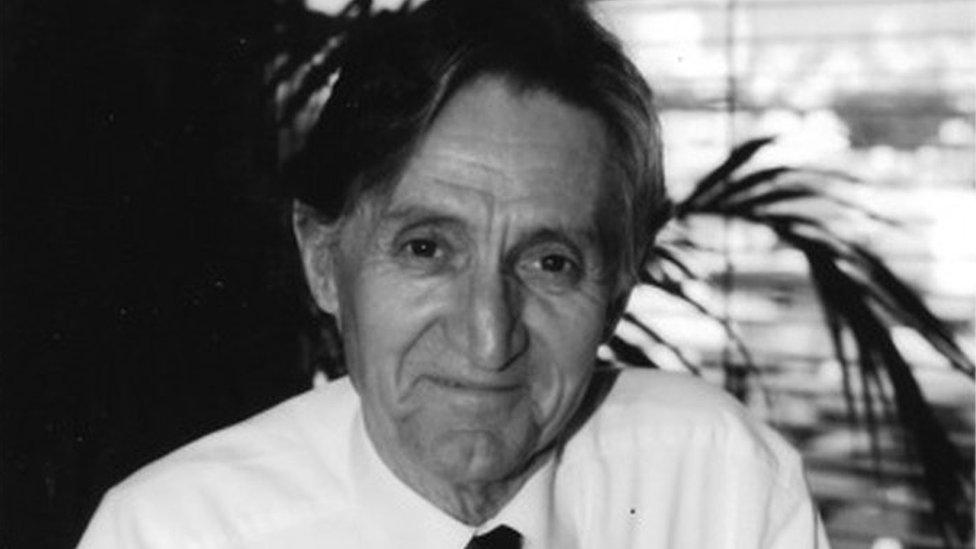William Mitchell Bracknell mural 'too big' for town centre
- Published

The work, depicting the history of Bracknell, was installed above a canopy in Charles Square
A bronze mural created by sculptor William Mitchell for a post-war "new town" will not be reinstalled in the newly developed town centre.
The 1960s relief, depicting the history of Bracknell, was removed from the town precinct before it was demolished.
The Bracknell Regeneration Partnership originally said it would be reinstated in an "accessible and sensible location" at the new development.
But a spokesman has now said the frieze is too big for the £240m scheme.
A third of Bracknell town centre is being remodelled to create The Lexicon - billed as a "shopping and leisure destination".
The 30-metre (98ft) sculpture, made of bronze-faced glass-reinforced plastic (GRP), was originally installed over shops in the town's former Crossway shopping precinct.

William Mitchell created hundreds of murals for public buildings
The regeneration partnership said it was working to find a suitable location for the artwork.
Speaking on its behalf, Legal & General development manager Simon Russian, said: "Due to the large size of the mural and space constraints within The Lexicon, it is not possible to relocate the William Mitchell sculpture within the new town centre."
William Mitchell, one of the most prolific sculptors of the post-war regeneration era, is best known for creating the bronze doors on Liverpool Metropolitan Cathedral.
Nine of his works have been listed by English Heritage but the history of Bracknell is not one of them.

It was hoped the frieze would be reinstalled on ground level to make it easier for people to see
Bracknell was designated a new town in 1949, at a time when the government was attempting to move millions of families out of London.
Commissioned by the Bracknell Development Corporation in the 1960s, the mural, which had been in Charles Square, illustrates the history of the town and its surroundings.
The imagery on the fibreglass and bronze panels makes reference to Roman history, incursions by Danes, Jutes and Saxons and Bracknell's royal links through the ages.
- Published11 January 2015

- Published5 July 2014

- Published26 November 2013

- Published19 August 2013